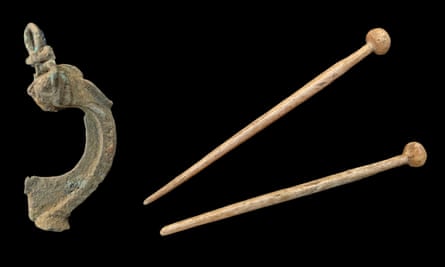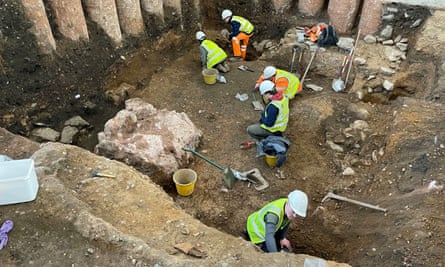[ad_1]
The Normans began construction more than 900 years ago on the building that would become Leicester Cathedral, but legend has long had it that the site has been one of worship as far back as the Roman occupation of Britain.
Now, an archaeological discovery has experts suggesting the legend may well be true.
Excavations have uncovered what is believed to be an altar stone, found within the cellar of a Roman building they say is probably the remains of a private shrine or cult room.
Mathew Morris, who led the dig, said the discovery of the Roman altar – the first to be found in Leicester – was “amazing”.
He added: “For centuries, there has been a tradition that a Roman temple once stood on the site of the present cathedral. This folktale gained wide acceptance in the late 19th century when a Roman building was discovered during the rebuilding of the church tower.”

The team digging an area within the cathedral’s gardens, previously part of St Martin’s churchyard, found evidence of a semi-subterranean chamber they thought was too well decorated to simply be a storage cellar. Within it, they found the base of an altar stone, lying broken and face down.
“Given the combination of a subterranean structure with painted walls and the altar we have found, one interpretation, which seemed to grow in strength as we excavated more, could be that this was a room linked with the worship of a god or gods. What we’re likely looking at here is a private place of worship, either a family shrine or a cult room where a small group of individuals shared in private worship,” said Morris, from the University of Leicester Archaeological Services (ULAS).

“Underground chambers like this have often been linked with fertility and mystery cults and the worship of gods such as Mithras, Cybele, Bacchus, Dionysius and the Egyptian goddess Isis. Sadly, no evidence of an inscription survived on our altar, but it would have been the primary site for sacrifice and offerings to the gods, and a key part of their religious ceremonies.”
He and his team have been excavating the site of the Old Song School, at the eastern end of the cathedral, for more than a year as part of a project to build a new visitor centre within the grounds.
The team also discovered more than 1,100 burials, ranging in date from the 11th century through to the mid-19th century. They said that once the project was completed those remains would be reinterred by Leicester Cathedral. They also found rare evidence from the Anglo-Saxon period, including a potential building and the first Anglo-Saxon coin found in Leicester in nearly 20 years, they said.
[ad_2]
READ SOURCE






